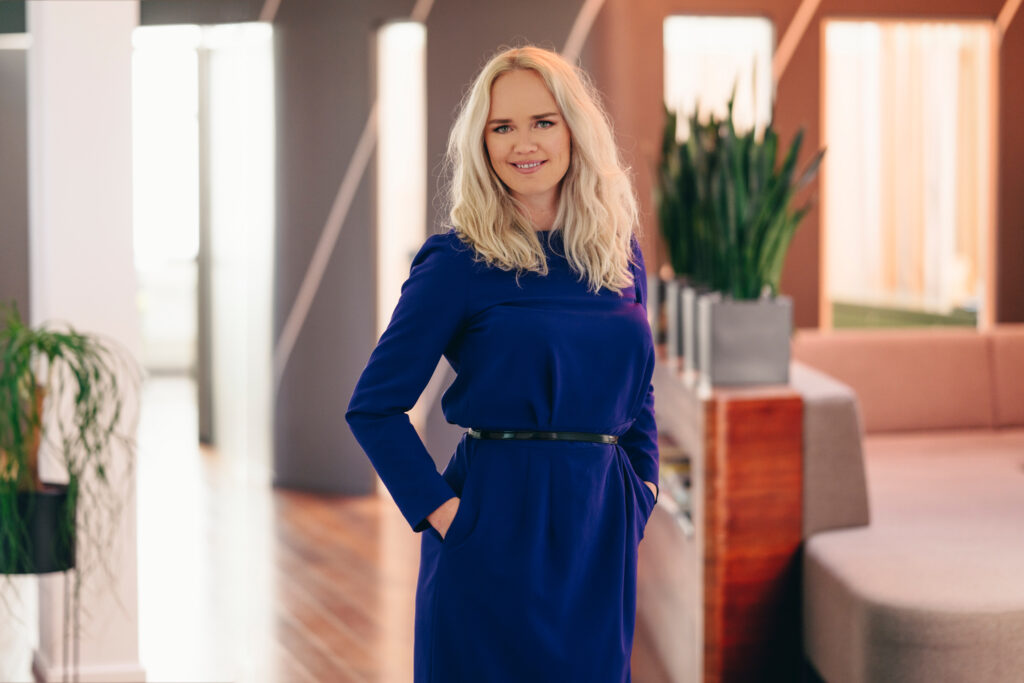Ann Hiiemaa: The Customer is the Hero of B2B marketing

Who is the hero in the customer story? Who is the villain? And who are you?
I love people and their stories. One of my favorite movies is Moneyball, which is about baseball and how Oakland A’s coach Billy Beane found a competitive advantage in a non-existent budget by applying an in-depth statistical analysis for team building.
Based on Michael Lewis’ book Moneyball: The Art of Winning an Unfair Game, their film uses a classic model found in many other films as well. Such as in The Lord of the Rings, my other big favorite – Forrest Gump, and in films like The King’s Speech, Tenet, James Bond films, and in most fairy tales.
In short, the main character, our hero, wants to achieve something that is very difficult. The moment he almost gives up, the unexpected intervention of a helping hand appears (such as a guide, a music teacher, a muse, a business manager, a communication expert), offers a plan, and supports our hero in fulfilling their goal.
Of course, there is always a villain or an enemy in the story. And, of course, the hero ultimately achieves their goal. Why am I telling this story? Because in B2B communication the key is just the same story.
Key question for B2B communication – who is the Hero?
Donald Miller’s book, Building a StoryBrand: Clarify Your Message So Customers Will Listen, sets out a similar framework for selling your product: there is a hero, a villain, a guide, a plan, Calls To Action, failure, and success.
The story begins with a hero. Companies should always ask: who is the hero for them? And it can never be themselves, but rather it is their customer. The customer must always be at the heart of a B2B brand communication strategy. Focusing on a customer’s needs and desires is crucial.
And the hero can never be companies themselves, but rather it is their customer.
The basic questions to consider are: who is our customer, what are their main challenges and needs, how do they communicate with us, what channels do they use to find solutions to their problems, who is the person they listen to and respect? And, above all, how can our product or service help or support them? Your entire offer must be built on customer challenges and concerns.
What or who is the so-called “villain” for your customer? The problem that is frustrating them? It is not uncommon for a customer to be unable to phrase their problem – there is a pain, but where exactly?
The Guide – that is you
Now the guide comes into the picture, the one who helps the hero (the customer) win their challenge. The guide creates a plan to help the hero achieve their goals. At Meta Advisory, we always build our communication plans based on the customer’s business goals, as the role of the communication is to support business growth.
The guide offers valuable content and tips that help the hero reach a solution. Content creation is based on the journey the customer is facing – from looking for solutions to small victories. Therefore, the most important thing is to map the hero’s journey as accurately as possible.
For B2B companies, the minimum activities are a visually appealing website, strong copy, and a clear message built on the hero’s challenge. The next stage includes, customer stories(testimonials), exceptionally strong management analysis, webinars, field research, podcasting, and white papers – conceptual reports that reveal a specific problem area and the challenge as a whole: why it has been difficult to solve so far, what solutions have been attempted, summaries of specific literature, a new philosophical approach, etc. Once you have your message, you need to be where your customer is and speak to them in a way in which they get your message.
There is a tremendous amount of information available for B2B customers online. The competition for the attention of buyers is tough. Brent Adamson of research firm Gartner wrote, in the first issue of the 2022 Harvard Business Review, that B2B customers spend only 17% of their buying process talking to potential suppliers. All the preliminary work is done internally, by comparing and analyzing easily accessible information.
This 17% portion of time that salespeople have direct contact with the customer, should be used for getting a very simple message to the customer, so that the decision matrix they’ve already created, will generate the result that you are the solution for them.
Brent Adamson’s analysis coincides with what we, marketers, have learned about telling stories and being a guide to the customer. This 17% portion of time that salespeople have direct contact with the customer, should be used for getting a very simple message to the customer, so that the decision matrix they’ve already created, will generate the result that you are the solution for them.
It is important to make it crystal clear to the hero, what your company offers and how it will help them in solving their problems.
Personal branding
In order to be heard, a guide must first establish themselves as an authoritative source, gain an expert image and create common experiences of success, which are the basis for building further trust. People don’t always buy the products or services of the best company. They buy the products and services they understand. And today, they are more willing to buy these products and services from businesses that are well-known in their field and available at the critical moments the customer needs advice or help.
People want to work with otehr people, not companies.
Here, too, communication comes into play. There is a new era in B2B marketing – although most sales contacts are now remote and through electronic channels, paradoxically, so much more human touch is needed in communication. People want to work with other people, not companies. The challenge for the company is to find more people and characters from its teams, including sales teams, to introduce to their customer segments through the company’s own channels and earned media, and to build their marketing communication on real people. Of course, it also supports the pillars of the company’s reputation, and works together with employer branding, etc. Field experts and prominent people help build a strong brand, which in turn helps generate more sales.
Both general media and a company’s own channels must be used here. Today, there are quite a few of those who systematically and consciously build their personal brands on LinkedIn and general media. It also supports one of the most acute challenges for B2B companies today – recruitment.
Miller points out two aspects in his book – success and failure. In other words, what will the life of a hero be if they don’t buy from you, and what will their story be if they do. And we all know that their life would definitely be much more enjoyable if they bought from you.

